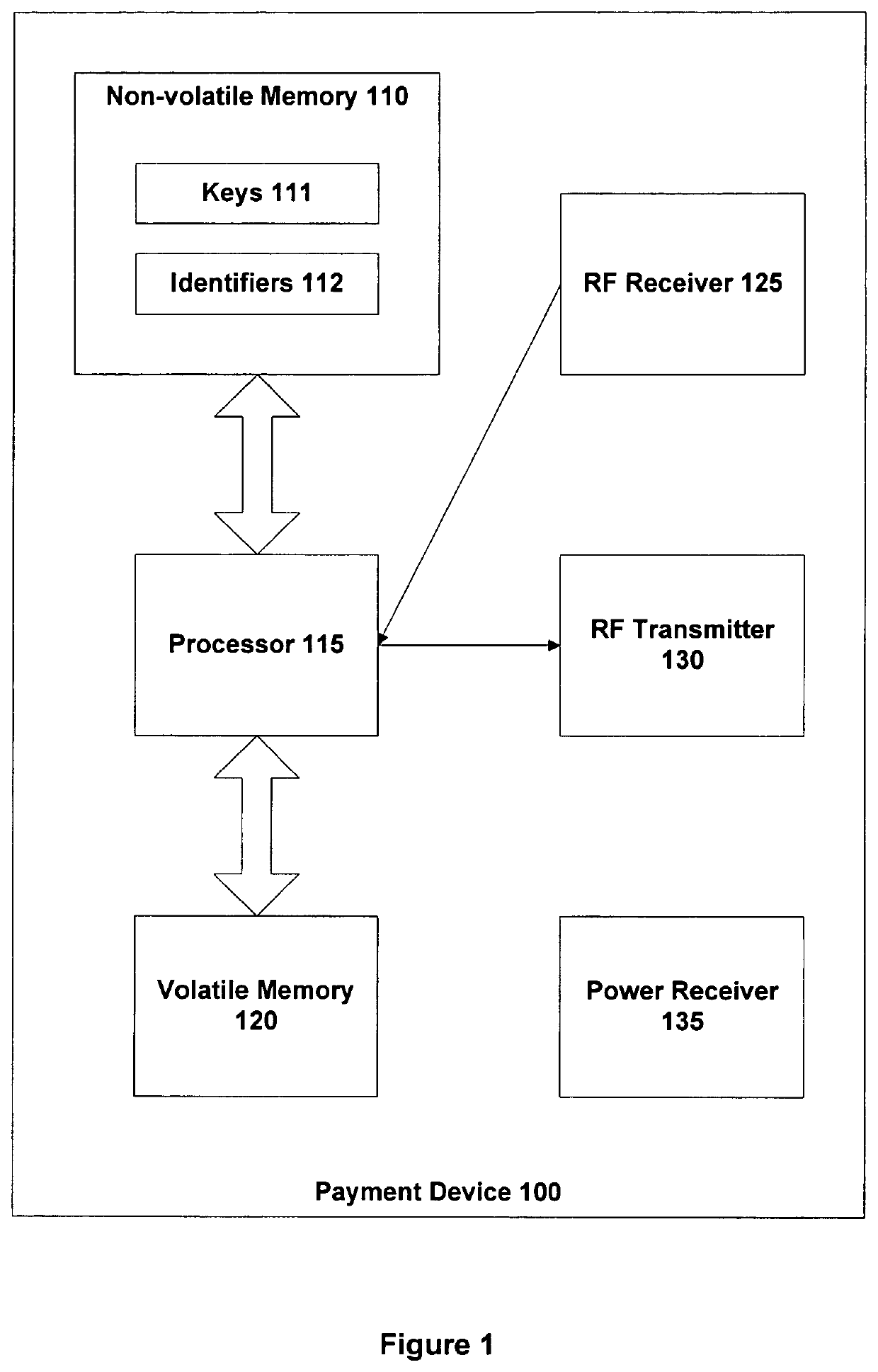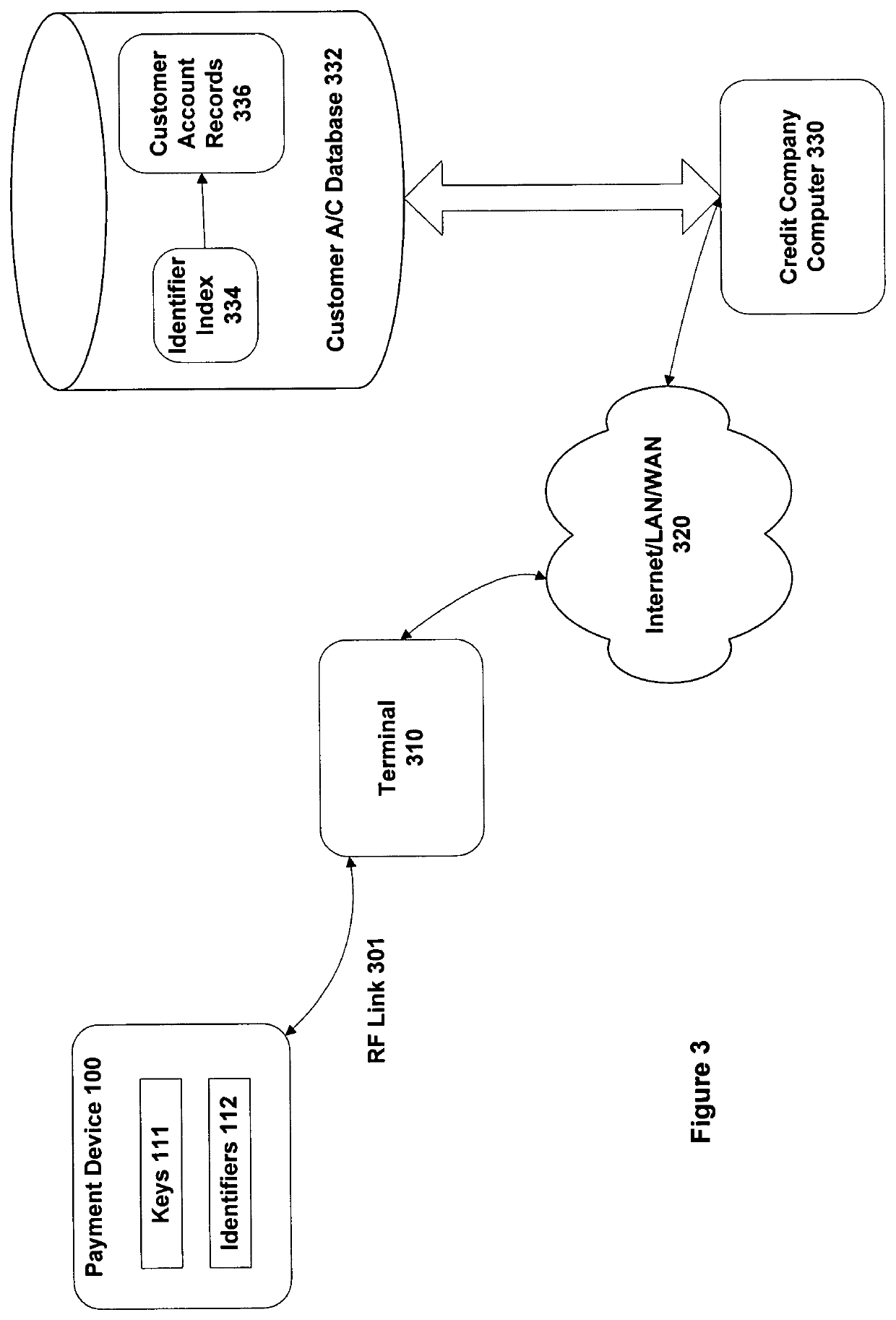Method and apparatus having multiple identifiers for use in making transactions
a technology of multiple identifiers and transactions, applied in the field of making transactions, can solve the problems of inability of merchants to link successive transactions by single customers, inability of merchants to build up any record of purchases pattern, and inability to relate different identifiers, etc., to achieve streamlined transaction procedures and limit the maximum transaction rate of devices
- Summary
- Abstract
- Description
- Claims
- Application Information
AI Technical Summary
Benefits of technology
Problems solved by technology
Method used
Image
Examples
Embodiment Construction
[0029]FIG. 1 illustrates in schematic form a payment device 100 in accordance with one embodiment of the invention. The payments device includes a processor 115, which is linked to volatile memory 120 (typically RAM), and also to non-volatile memory 110, typically EPROM, such as flash memory. Note that a certain portion of non-volatile memory 110 may be made read only (i.e. ROM rather than PROM). Cryptographic keys 111 and identifiers 112, as described in more detail below, are stored within non-volatile memory 110.
[0030]Payment device 100 further incorporates a facility to communicate with the outside world. In the embodiment of FIG. 1 this is provided by an RF receiver 125 and an RF transmitter 130. If desired, these could be combined into a single transceiver. Other forms of communication could also be provided instead of (or as well as) the RF devices, such as an infrared link. Similarly, payment device 100 may be formed with a suitable connector for enabling a wired communicati...
PUM
 Login to View More
Login to View More Abstract
Description
Claims
Application Information
 Login to View More
Login to View More - R&D
- Intellectual Property
- Life Sciences
- Materials
- Tech Scout
- Unparalleled Data Quality
- Higher Quality Content
- 60% Fewer Hallucinations
Browse by: Latest US Patents, China's latest patents, Technical Efficacy Thesaurus, Application Domain, Technology Topic, Popular Technical Reports.
© 2025 PatSnap. All rights reserved.Legal|Privacy policy|Modern Slavery Act Transparency Statement|Sitemap|About US| Contact US: help@patsnap.com



